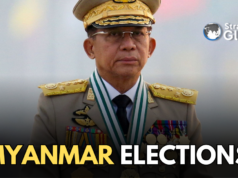
In the third and last in our series Disputed, we examine the case of Arunachal Pradesh in the east, which is claimed by China, underscoring the lack of any understanding on the alignment of the Line of Actual Control (LAC). But is the claim to Arunachal a smoke-screen for something else? The Chinese say Tawang belongs to them and must be handed over. For India that is an impossible demand.
Tawang is strategically located near the confluence of the Indian, Tibetan and Bhutanese borders. It is the birthplace of the 6th Dalai Lama Tsangyang Gyatso and houses the famous Tawang Monastery, considered the “daughter” of the Drepung monastery in Lhasa.
In the late 18th century, the Tibetan authorities exercised some control over Tawang through the Tawang monastery but a survey in 1874 indicated that it was functioning independently. Tibetans, however, continued to trade as far south as Udalguri in Assam.
The Shimla Conference of 1914 settled the Indo-Tibetan border north of Tawang. Lochen Shatra, the Tibetan official attending the conference had no objection to the alignment of the McMahon Line that placed Tawang in British administered India.
Historian and writer Alastair Lamb argues that Lochen Shatra’s stand on the proposed McMahon Line may have been in return for generous British support on the finalisation of the boundary between China and Outer Tibet, as proposed by the Tibetans. But this remains in the realm of speculation.
There is however no doubt, of the presence of a Tibetan administration in Tawang. In 1938, a military column sent to Tawang to assert British claims to the McMahon Line was resisted. In 1944 an Assam Rifles picket was established at Dirang, 130 km south of Tawang, extending administrative control up to Sela, but the Tibetan administration remained.
The issue was settled only in Feb 1951 when Major Bob Kathing, assistant political officer at Sela, was sent in to evict the Tibetan administration, which was successfully done.
Interesting to note that there were no objections raised either by the Tibetans or the Chinese. The latter objected only in 1959 when they claimed that Indian troops had breached the McMahon Line.
An article in the People’s Daily in October 1962, admitted that Indian actions were not challenged because ‘New China’ had no time to attend to the Sino-Indian border. Still later the Chinese during border talks acknowledged that Tibet, at best, only exercised ecclesiastical authority over Tawang.
Tawang has grown in strategic importance with successive Indian governments convinced that it could become a convenient corridor for the Chinese to enter the country. It is generally accepted that the Chinese will use it as a military pressure point, witness the developments post 1986 when they began demanding meaningful concessions in the eastern sector including that Tawang be handed over.
The question is if Tawang was so important why did the Chinese withdraw from the town after the end of hostilities in 1962? Was it because of the approaching winter and the difficulties of logistically sustaining troops?
That argument doesn’t hold since Tawang is connected by perennially open routes. It does suggest that China saw Tawang as part of India and the current claims are a bargaining strategy. India’s claim to Tawang got a boost when in 2008, the Dalai Lama, in a major departure from his earlier ambiguous stance, declared it a part of India.
Tawang will remain a subject of politico-diplomatic maneuvering during peace, and in any future conflict, due to its strategic importance, may become a major politico-military objective for the PLA.
For India, a threat to Tawang is unacceptable and the ramifications of its loss will be unimaginable. It will shake the trust of the people who practice Buddhism and inhabit the Himalayan region from Leh to Kibithu. In addition, the security of the entire northeast will be imperilled.
Thirty eight years in journalism, widely travelled, history buff with a preference for Old Monk Rum. Current interest/focus spans China, Technology and Trade. Recent reads: Steven Colls Directorate S and Alexander Frater's Chasing the Monsoon. Netflix/Prime video junkie. Loves animal videos on Facebook. Reluctant tweeter.




